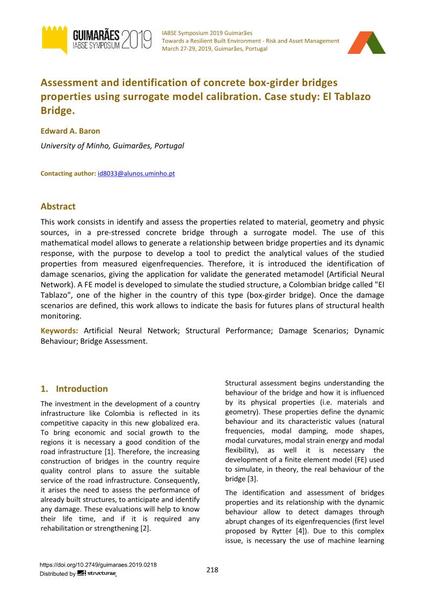Assessment and identification of concrete box-girder bridges

|
|
|||||||||||
Bibliografische Angaben
| Autor(en): |
Edward A. Baron
(University of Minho, Guimarães, Portugal)
|
||||
|---|---|---|---|---|---|
| Medium: | Tagungsbeitrag | ||||
| Sprache(n): | Englisch | ||||
| Tagung: | IABSE Symposium: Towards a Resilient Built Environment Risk and Asset Management, Guimarães, Portugal, 27-29 March 2019 | ||||
| Veröffentlicht in: | IABSE Symposium Guimarães 2019 | ||||
|
|||||
| Seite(n): | 218-225 | ||||
| Anzahl der Seiten (im PDF): | 8 | ||||
| DOI: | 10.2749/guimaraes.2019.0218 | ||||
| Abstrakt: |
This work consists in identify and assess the properties related to material, geometry and physic sources, in a pre-stressed concrete bridge through a surrogate model. The use of this mathematical model allows to generate a relationship between bridge properties and its dynamic response, with the purpose to develop a tool to predict the analytical values of the studied properties from measured eigenfrequencies. Therefore, it is introduced the identification of damage scenarios, giving the application for validate the generated metamodel (Artificial Neural Network). A FE model is developed to simulate the studied structure, a Colombian bridge called "El Tablazo", one of the higher in the country of this type (box-girder bridge). Once the damage scenarios are defined, this work allows to indicate the basis for futures plans of structural health monitoring. |
||||
| Stichwörter: |
dynamisches Verhalten
|
||||
